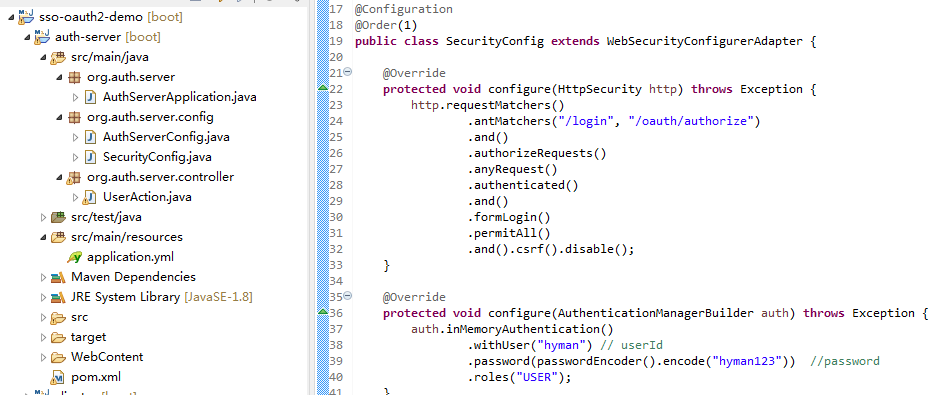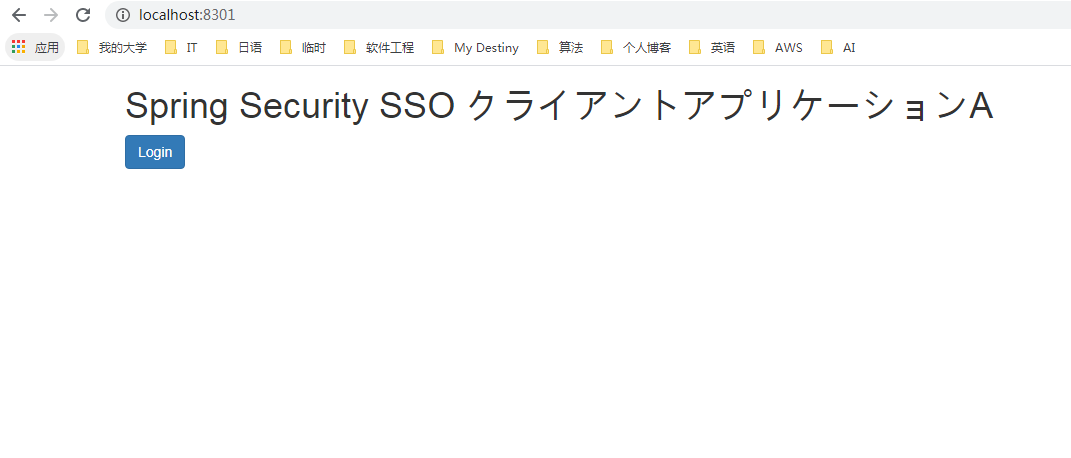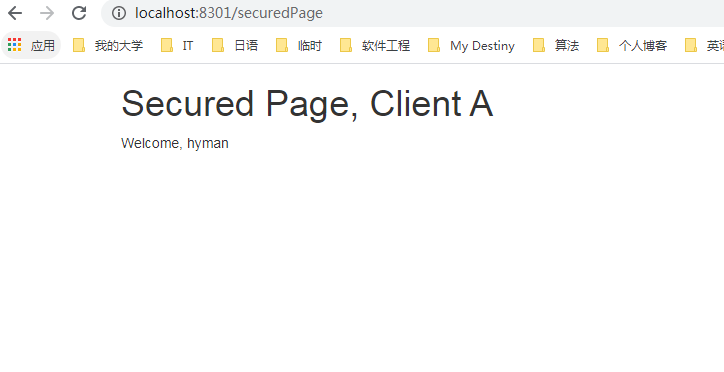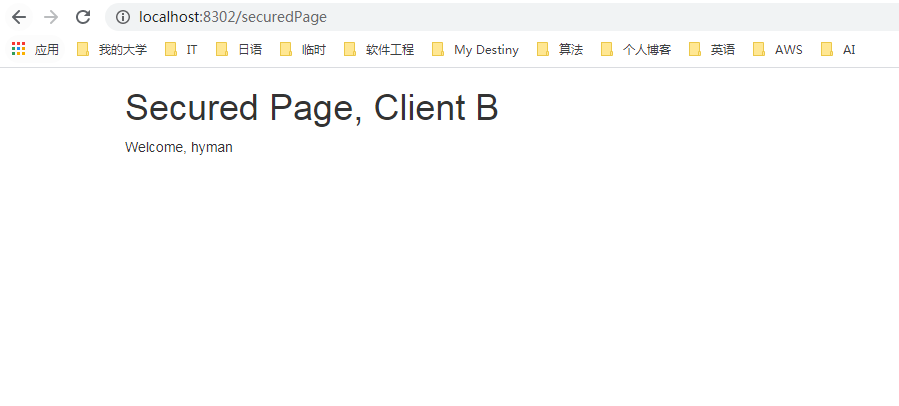今日はシングルサインオンSSOのことをサンプルを作りながら説明します。
SSOとは
Single Sign Onの略。1つのIDとパスワードを入力して、複数のWebサービスやアプリケーションにログインする仕組み。入力や管理の手間を省き、セキュリティを強化することができる。
イメージは以下のように参照しましょう。
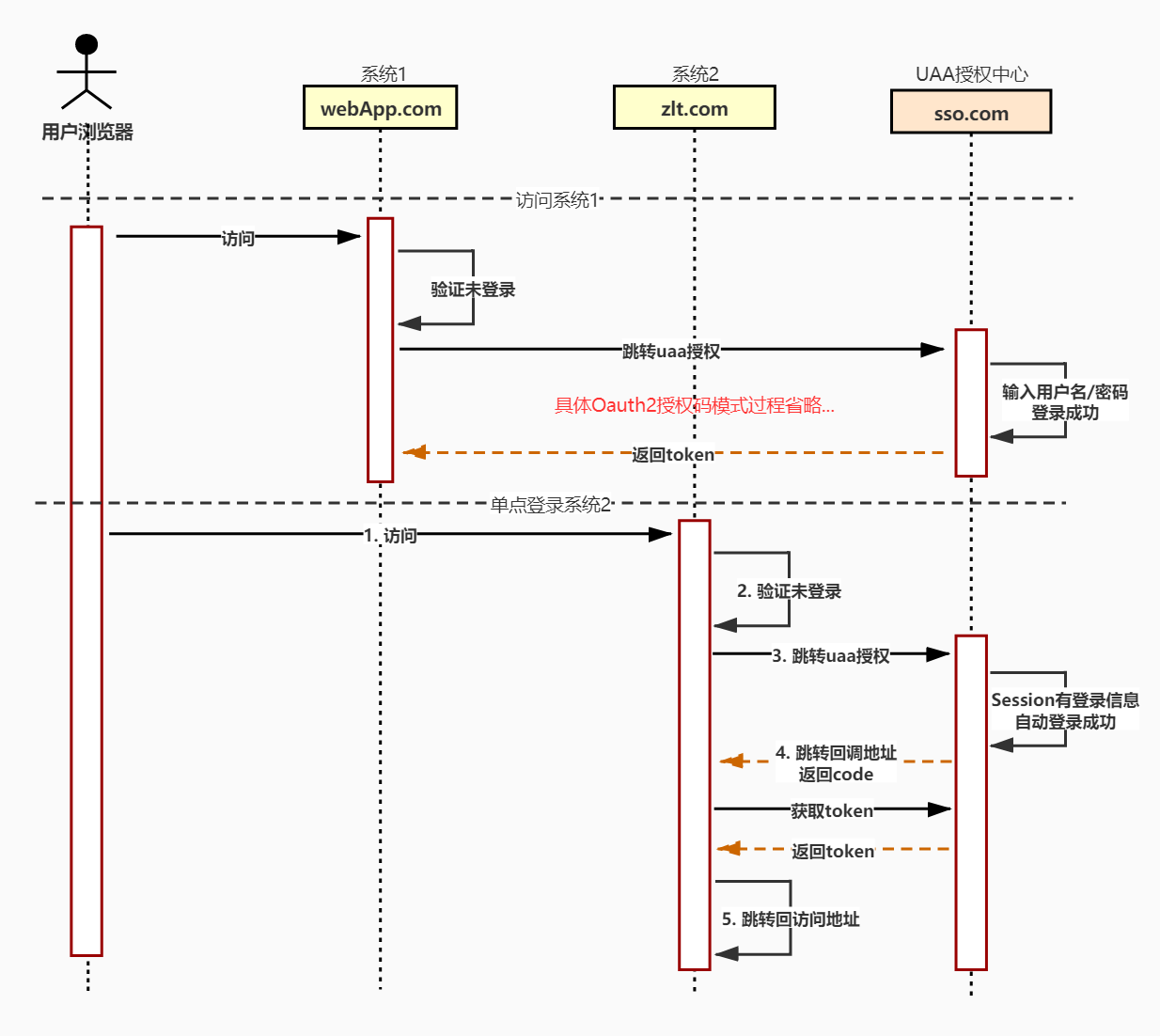
SS0機能実装
本記事はサンプルプロジェクトを作って説明します。主にSpring Security Oauth2を活用してSSO機能を実現します。
環境準備
予めspring security、oauth2.0などの知識を持っていればよいです。
- Eclipse
- Java8
- Spring
- OAuth2.0
親プロジェクトを作る
mavenで親のプロジェクトを作りました。sso-oauth2-demoをネーミングします。
pom.xmlに下記のように配置します。
<project xmlns="http://maven.apache.org/POM/4.0.0"
xmlns:xsi="http://www.w3.org/2001/XMLSchema-instance"
xsi:schemaLocation="http://maven.apache.org/POM/4.0.0 http://maven.apache.org/xsd/maven-4.0.0.xsd">
<modelVersion>4.0.0</modelVersion>
<groupId>com.example</groupId>
<artifactId>sso-oauth2-demo</artifactId>
<version>1.0-SNAPSHOT</version>
<properties>
<java.version>1.8</java.version>
<spring-boot.version>2.1.9.RELEASE</spring-boot.version>
<spring-security.version>2.1.9.RELEASE</spring-security.version>
</properties>
<dependencies>
<dependency>
<groupId>org.springframework.boot</groupId>
<artifactId>spring-boot-starter-security</artifactId>
</dependency>
<dependency>
<groupId>org.springframework.security.oauth.boot</groupId>
<artifactId>spring-security-oauth2-autoconfigure</artifactId>
<version>${spring-security.version}</version>
</dependency>
</dependencies>
<dependencyManagement>
<dependencies>
<dependency>
<groupId>org.springframework.boot</groupId>
<artifactId>spring-boot-dependencies</artifactId>
<version>${spring-boot.version}</version>
<scope>import</scope>
<type>pom</type>
</dependency>
</dependencies>
</dependencyManagement>
</project>
SSO認証サーバを作る
SSO認証サーバ配置
(1).上記の親プロジェクトの下に子供のモジュールを作って、auth-serverをネーミングします。
auth-serverプロジェクトのpom.xmlに下記のように配置します。
<?xml version="1.0" encoding="UTF-8"?>
<project xmlns="http://maven.apache.org/POM/4.0.0" xmlns:xsi="http://www.w3.org/2001/XMLSchema-instance"
xsi:schemaLocation="http://maven.apache.org/POM/4.0.0 https://maven.apache.org/xsd/maven-4.0.0.xsd">
<modelVersion>4.0.0</modelVersion>
<parent>
<groupId>com.example</groupId>
<artifactId>sso-oauth2-demo</artifactId>
<version>1.0-SNAPSHOT</version>
<relativePath/> <!-- lookup parent from repository -->
</parent>
<artifactId>auth-server</artifactId>
<version>0.0.1-SNAPSHOT</version>
<name>auth-server</name>
<description>Demo project for Spring Boot</description>
<dependencies>
<dependency>
<groupId>org.springframework.boot</groupId>
<artifactId>spring-boot-starter-web</artifactId>
</dependency>
<dependency>
<groupId>org.springframework.boot</groupId>
<artifactId>spring-boot-starter-test</artifactId>
<scope>test</scope>
</dependency>
</dependencies>
<build>
<plugins>
<plugin>
<groupId>org.springframework.boot</groupId>
<artifactId>spring-boot-maven-plugin</artifactId>
</plugin>
</plugins>
</build>
</project>
(2).application.ymlを作成して下記のように配置します。
ここでは、sso認証サーバーのポート(8300)を指定します。
server:
port: 8300
servlet:
context-path: '/auth'
SSO認証サーバ実装
(1).mainクラスを実装
下記のとおり、実装してみよう。
@EnableResourceServerアノテーションをmainクラスの上に付けます。このアノテーションが重要です。
@SpringBootApplication
@EnableResourceServer
public class AuthServerApplication
{
public static void main( String[] args )
{
SpringApplication.run(AuthServerApplication.class, args);
}
}
(2).authクラスを実装
/**
* SSO認証サーバー
* @author hyman
*/
@Configuration
@EnableAuthorizationServer
public class AuthServerConfig extends AuthorizationServerConfigurerAdapter {
@Autowired
private BCryptPasswordEncoder passwordEncoder;
@Override
public void configure(final AuthorizationServerSecurityConfigurer oauthServer) throws Exception {
oauthServer.tokenKeyAccess("permitAll")
.checkTokenAccess("isAuthenticated()");
}
@Override
public void configure(final ClientDetailsServiceConfigurer clients) throws Exception {
clients.inMemory()
.withClient("SampleClientId")
.secret(passwordEncoder.encode("secret"))
.authorizedGrantTypes("authorization_code")
.scopes("user_info")
.autoApprove(true)
.redirectUris("http://localhost:8301/login", "http://localhost:8302/login");
}
}
(3).securityクラスを実装
ここでユーザidとパスワードはソースの中で定義します。
ユーザーID:hyman
パスワード:hyman123
/**
* security配置
* ここでユーザidとパスワードはソースの中で定義します。
* @author hyman
*
*/
@Configuration
@Order(1)
public class SecurityConfig extends WebSecurityConfigurerAdapter {
@Override
protected void configure(HttpSecurity http) throws Exception {
http.requestMatchers()
.antMatchers("/login", "/oauth/authorize")
.and()
.authorizeRequests()
.anyRequest()
.authenticated()
.and()
.formLogin()
.permitAll()
.and().csrf().disable();
}
@Override
protected void configure(AuthenticationManagerBuilder auth) throws Exception {
auth.inMemoryAuthentication()
.withUser("hyman") // ユーザーID:hyman
.password(passwordEncoder().encode("hyman123")) // パスワード:hyman123
.roles("USER");
}
@Bean
public BCryptPasswordEncoder passwordEncoder() {
return new BCryptPasswordEncoder();
}
}
(3).SSO認証APIクラスを実装
SSO認証サーばーへアクセスURLはhttp://localhost:8300/auth/user/me となります。
@RestController
@RequestMapping(value = "user")
public class UserAction {
@GetMapping(value = "me")
public Principal me(Principal principal) {
System.out.println("アクセスユーザー情報:" + principal);
return principal;
}
}
ここまで、SSO認証サーバーの実装は終りました。パッケージなどの階層は以下のとおり、参照ください。
クライアントアプリケーションを作る
ここから、クライアントアプリケーションを作り始めます。本記事は二つのクライアントアプリケーションをつくります。client-aとclient-bです。
client-aアプリケーション
client-a配置
(1).親のsso-oauth2-demoプロジェクトの下にclient-aモジュールを作成します。
client-aモジュールのpom.xmlに下記のように配置します。
<?xml version="1.0" encoding="UTF-8"?>
<project xmlns="http://maven.apache.org/POM/4.0.0" xmlns:xsi="http://www.w3.org/2001/XMLSchema-instance"
xsi:schemaLocation="http://maven.apache.org/POM/4.0.0 https://maven.apache.org/xsd/maven-4.0.0.xsd">
<modelVersion>4.0.0</modelVersion>
<parent>
<groupId>com.example</groupId>
<artifactId>sso-oauth2-demo</artifactId>
<version>1.0-SNAPSHOT</version>
<relativePath/> <!-- lookup parent from repository -->
</parent>
<artifactId>client-a</artifactId>
<version>0.0.1-SNAPSHOT</version>
<name>client-a</name>
<description>Demo project for Spring Boot</description>
<dependencies>
<dependency>
<groupId>org.springframework.boot</groupId>
<artifactId>spring-boot-starter-web</artifactId>
</dependency>
<dependency>
<groupId>org.springframework.boot</groupId>
<artifactId>spring-boot-starter-test</artifactId>
<scope>test</scope>
</dependency>
<dependency>
<groupId>org.springframework.boot</groupId>
<artifactId>spring-boot-starter-thymeleaf</artifactId>
</dependency>
<dependency>
<groupId>org.thymeleaf.extras</groupId>
<artifactId>thymeleaf-extras-springsecurity5</artifactId>
</dependency>
</dependencies>
<build>
<plugins>
<plugin>
<groupId>org.springframework.boot</groupId>
<artifactId>spring-boot-maven-plugin</artifactId>
</plugin>
</plugins>
</build>
</project>
(2).application.xml配置
下記のとおり、client-aを配置します。
ここでclient-aのポートを8301で定義します。
server:
port: 8301
servlet:
session:
cookie:
name: CLIENT_A_SESSION
security:
oauth2:
client:
client-id: SampleClientId
client-secret: secret
access-token-uri: http://localhost:8300/auth/oauth/token
user-authorization-uri: http://localhost:8300/auth/oauth/authorize
resource:
user-info-uri: http://localhost:8300/auth/user/me # SSO認証サーバーのアドレス
spring:
thymeleaf:
cache: false
client-a実装
(1).securityクラスの実装
@EnableOAuth2Ssoアノテーションが重要ですから、忘れずに、クラスの上に付けます。
@EnableOAuth2Sso
@Configuration
public class MySecurityConfig extends WebSecurityConfigurerAdapter {
@Override
public void configure(HttpSecurity http) throws Exception {
http.antMatcher("/**")
.authorizeRequests()
.antMatchers("/", "/login**")
.permitAll()
.anyRequest()
.authenticated();
}
}
(2).画面の実装
resourcesフォルダの下にtemplaesフォルダを作って、画面表示用のindex.htmlファイルを作ります。
下記の内容をindex.htmlに書き込みます。
<!DOCTYPE html>
<html lang="en">
<head>
<meta http-equiv="Content-Type" content="text/html; charset=utf-8" />
<title>Spring Security SSO</title>
<link rel="stylesheet"
href="https://maxcdn.bootstrapcdn.com/bootstrap/3.3.2/css/bootstrap.min.css" />
</head>
<body>
<div class="container">
<div class="col-sm-12">
<h1>Spring Security SSO クライアントアプリケーションA</h1>
<a class="btn btn-primary" href="securedPage">Login</a>
</div>
</div>
</body>
</html>
上記と同じの場所でsecuredPage.htmlを作って下記のように実装します。
<!DOCTYPE html>
<html lang="en" xmlns:th="http://www.w3.org/1999/xhtml">
<head>
<meta http-equiv="Content-Type" content="text/html; charset=utf-8" />
<title>Spring Security SSO</title>
<link rel="stylesheet"
href="https://maxcdn.bootstrapcdn.com/bootstrap/3.3.2/css/bootstrap.min.css" />
</head>
<body>
<div class="container">
<div class="col-sm-12">
<h1>Secured Page, Client A</h1>
Welcome, <span th:text="${#authentication.name}">Name</span>
</div>
</div>
</body>
</html>
(2).Controllerクラス実装
@Controller
public class IndexAction {
@GetMapping(value = "")
public String index() {
System.out.println("ClientAのindex画面へ遷移する");
return "index.html";
}
@GetMapping(value = "securedPage")
public String home() {
System.out.println("ClientAのsecuredPage画面へ遷移する");
return "securedPage.html";
}
}
ここまで行くと、client-aは終りました。
client-bアプリケーション
client-bアプリケーションの作り方はclient-aと同じですから、ここで略です。
ただ、client-bアプリケーションを作成する際にあるところでclient-bの名称を書き換えるが必要です。
たとえば、client-bのポートを8302に変わってます。
ここでSS0機能実装は全部完了しました。
SS0機能検証
まず、それぞれ三つのプロジェクトを起動します。
- auth-server
- client-a
- client-b
あと、client-aをアクセスします。urlはhttp://localhost:8301となります。
Loginボタンをクリックします。Login画面でユーザーID(hyman)とパスワード(hyman123)を入力してログインします。
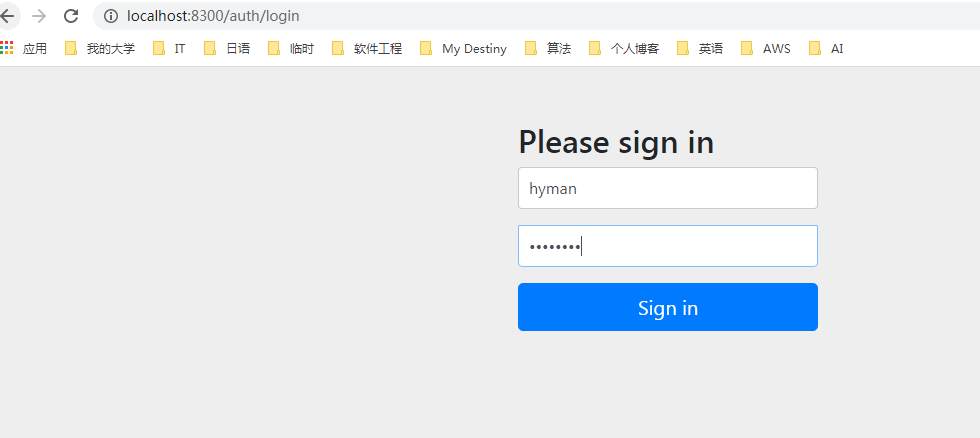
ここまで、client-aを経由してログインできましたので、SSO機能の影響でclient-bをアクセスするときにclient-bのindex画面でLoginボタンをクリックしてユーザーIDとパスワードを入力ずに、ログインできるはずです。
じゃあ、検証してみましょう。
http://localhost:8302/ を経由してclient-bをアクセスします。
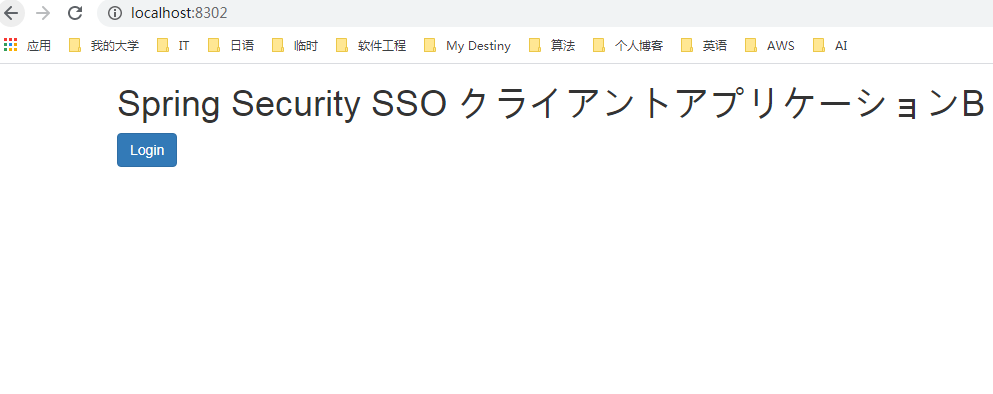
Loginボタンをクリックすると、ログイン画面へ遷移しないでclient-bのsecuredPage画面にいきます。
だから、SSOの機能はうまくいけました。
最後に
最後まで読んでいただき、ありがとうございます。
ソースコードはこちらでダウンロードできます。
ソースコード:https://github.com/Hyman1993/Demo-Projects/tree/master/sso-oauth2-demo
